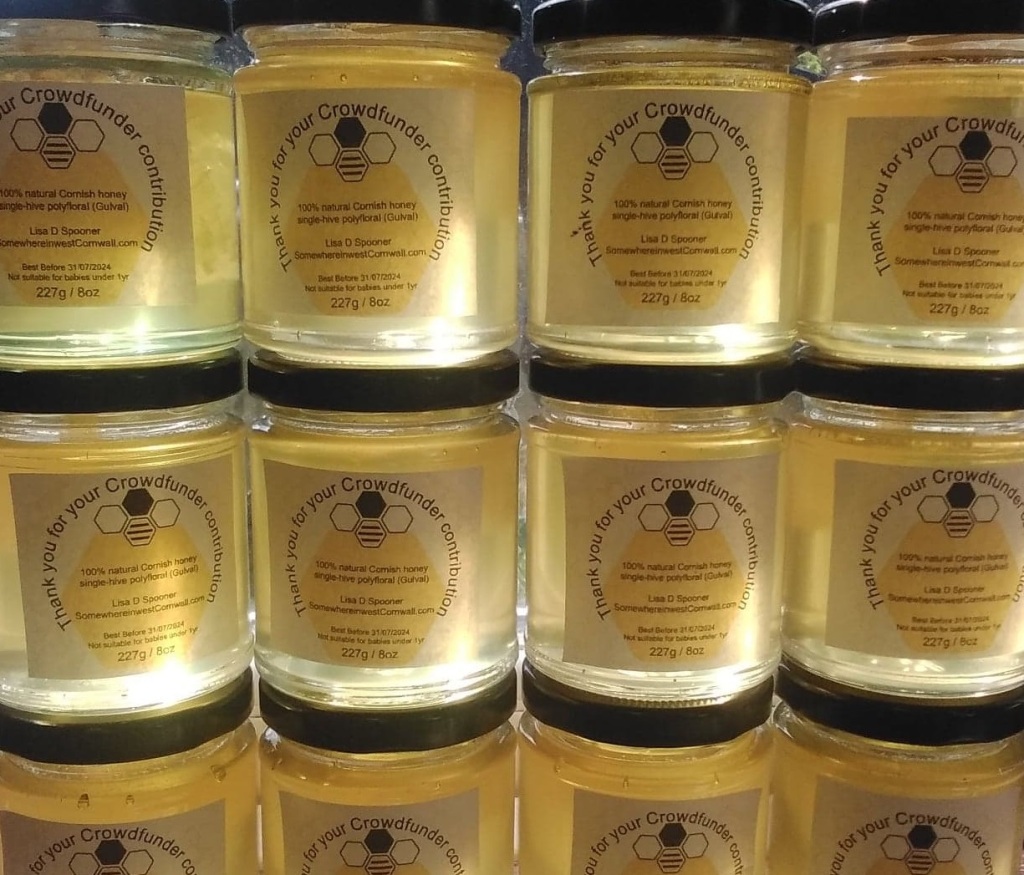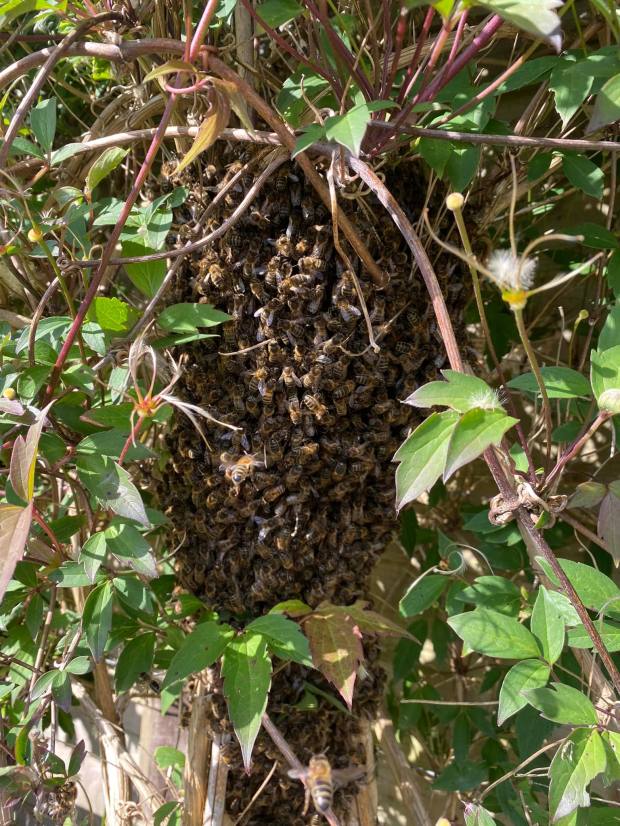What a difference 6 months makes. Ditto: three years. And, oh, how time flies. Back in February I lost my last remaining colony of honeybees to Storm Eunice. The previous year had been an odd one (not only for me but others beekeepers I’d heard of, around the world): starting 2021 with 6 healthy colonies, I ended with just the two, with one of these becoming queenless, so I’d combined them together and they survived well overwinter – until Storm Eunice arrived, and that was that. Prompted by a friend I set up a Crowdfunder, aiming to raise sufficient funds for a replacement colony, and was amazed at the generosity of friends and strangers: enabling me to get going again.
In my Crowdfunder pitch, I stated my intention to thank each contributor with a jar of honey from the new bees. However, honey production is unpredictable, so I’d given myself (and the bees!) an 18-month timeframe, to avoid undue pressure. So, what a joy it has been to find I’ve been able to do this sooner rather than later, thanks to these wonderfully busy bees very quickly producing an impressive stash of honey, largely due to these past few weeks of wonderful warm weather. I’ve taken only enough to reward my Crowdfunder supporters and others who’ve helped me. The rest is staying on the hive for those busy bees: they’ll continue to make more in the coming weeks, so that, come autumn, they’ll be well-stocked with honey to get them through winter, ready to get going again next spring.
In the meantime, of course, I also caught two swarms, taking my total colony collection from zero to three, in a matter of weeks. The first one, I caught via the magic of a bait hive, set up in the back garden at home. The second one I retrieved from a nearby garden, following a shoutout for ‘help’ on social media. This second one I’ll write about another time. The first one was a small swarm, with a beautiful red-brown queen who got straight to work, laying eggs as fast as her daughters could build the comb for her to fill … they have, however, taken some time to expand, and have struggled with wasps robbing their precious food stores. They’ve remained living in a small hive atop the playhouse in my back garden, where I’ve been enjoying watching them going about their busy-bee-ness; checking in on them every now and then until, this week, I felt they were ready to move on, and I relocated them into the ‘spaceship’ (as I call my Eat Natural Pollenation hive) at Crows an Wra (not far from Land’s End).
It’s not the prettiest of beehives, and there have been some issues with it (a novelty design trailed specifically for this project). I had to bodge-up a reinforcement roof covering (because the original roof let water in), and it could definitely do with a new paint-job … but the heavy metal legs are sturdy (meaning it won’t – fingers cross! – go over in future wind storms) and it is dry and secure inside … I’ll keep using it until it can no longer be used. And then make a new plan …
I actually haven’t been back to this apiary site since retrieving the toppled hive back in February, and was not entirely surprised to find the place overgrown with gorse and brambles: though I was a little shocked to discover just how much it had grown – towering at nearly 2m high!! Astonishing, the difference, since I first sited my bees there back in August 2019. Fortunately, my glamorous assistant (aka husband) came along to help; clearing a path to leave the spaceship nestled securely in a protective enclosure of thick gorse and brambles – providing shelter from the wind AND a source of pollen-&-nectar bee-food. Win-Win.












